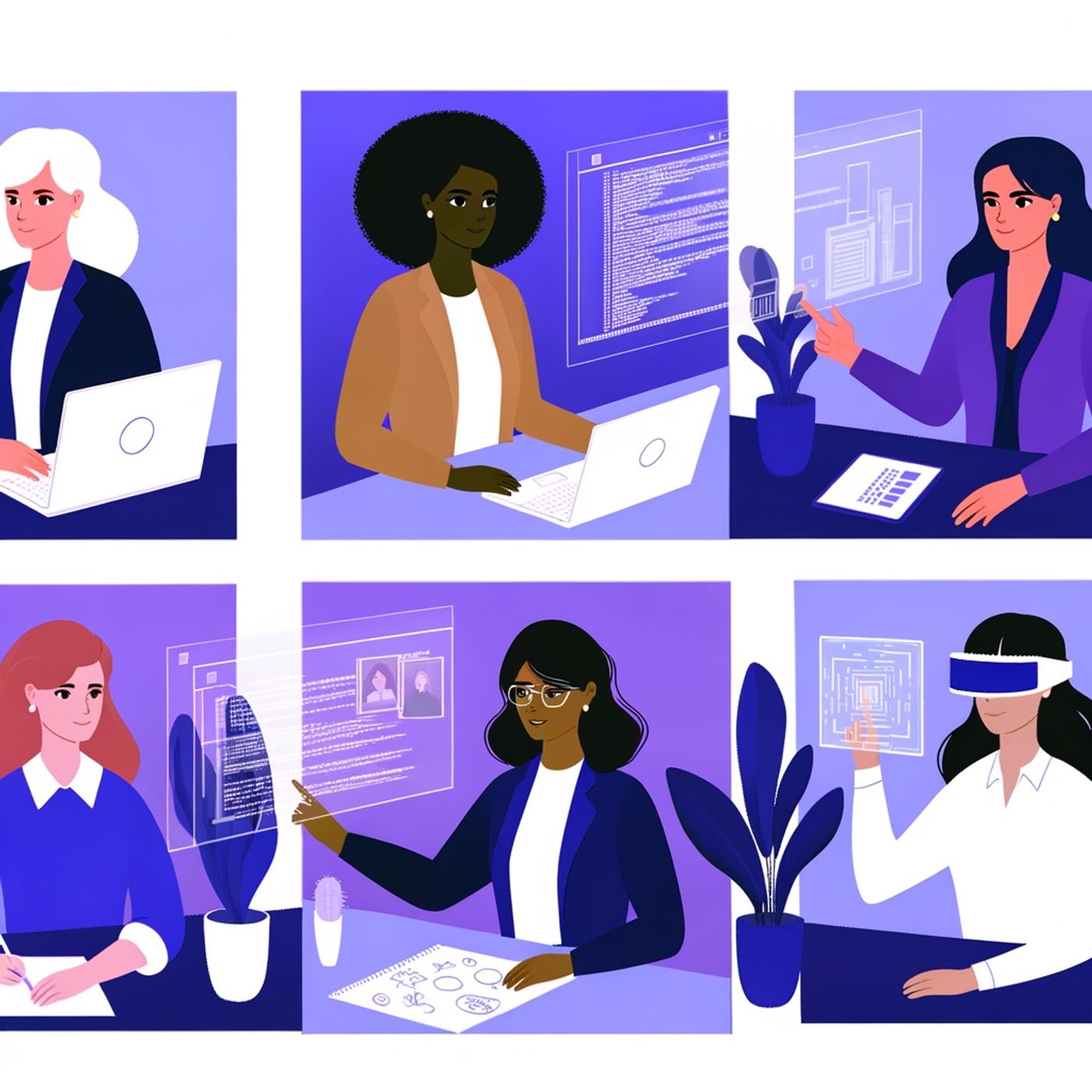Podcast Episode Details
Back to Podcast Episodes
Shattering Tech's Glass Ceiling: Women Powering Innovation
This is your Women in Business podcast.
Welcome back to Women in Business. I’m excited to dive right into the heart of our topic today: women navigating the current economic landscape in the tech industry. This is a sector where bold ideas change the world daily, but where gender gaps remain stubbornly persistent. Right now, women make up about 35% of the tech workforce in the United States, a notable increase from just 9% in the early 2000s. Still, when you look closely at tech giants like Google and Microsoft, you’ll find that women hold just around a third of all positions—and their representation drops even further in leadership roles, hovering near 28% at Microsoft and 31% at Apple.
Let’s get right into our first discussion point: representation. Despite women making up nearly half of the overall workforce, only about one in four people in core tech fields—think software development, artificial intelligence, and engineering—are women. Even fewer women occupy C-suite roles or serve as chief technology officers. At last count, just 17% of tech companies have a woman CEO, and for CTO positions, it’s a sobering 8%. This matters, not just for equity, but because diversity sparks better business outcomes and fuels innovation.
Our second point brings us to education and the pipeline problem. Although more women are enrolling in STEM fields, and the number of women with computer science degrees has risen slightly, they still account for only about 21% of computer and information science graduates. These disparities start early and ripple through to the workforce, where women remain underrepresented, especially in high-growth areas such as cybersecurity, network architecture, and advanced AI.
Third, we have to talk barriers. According to recent reports from WomenTech Network, up to 72% of women in tech say they’ve faced gender bias that affected their chances for promotion or leadership. Over half have experienced discrimination or harassment that hindered their careers. Limited access to critical networking opportunities worsens the challenge—58% of women report unequal networking access compared to men. The impact? Fewer women in leadership, more self-doubt, and a tech landscape that misses out on transformative talent.
Moving into our fourth point: the impact of economic shifts and remote work. The move to remote work brought flexibility—and for many women, that’s been a game-changer. But it’s a double-edged sword: with flexibility has come burnout, and the post-pandemic landscape saw a brief dip in women’s participation in tech. As venture funding becomes harder to secure, especially for female founders, the struggle intensifies. According to the latest data, women receive only a sliver of global venture capital, despite studies showing that diverse leadership teams deliver stronger returns.
Finally, let’s explore how women in tech are leveraging new technologies like generative AI. Forty percent of women in tech now use generative AI in their work, and nearly three-quarters believe it’s improved their productivity. There’s real momentum behind DEI—diversity, equity, and inclusion—initiatives, and rising STEM graduation rates among women point to slow but positive change.
Thank you for tuning in to Women in Business. Remember to subscribe for more empowering stories and lively discussions. This has been a quiet please production, for more check out quiet please dot ai.
For more http://www.quietplease.ai
Get the best deals https://amzn.to/3ODvOta
Published on 2 weeks ago